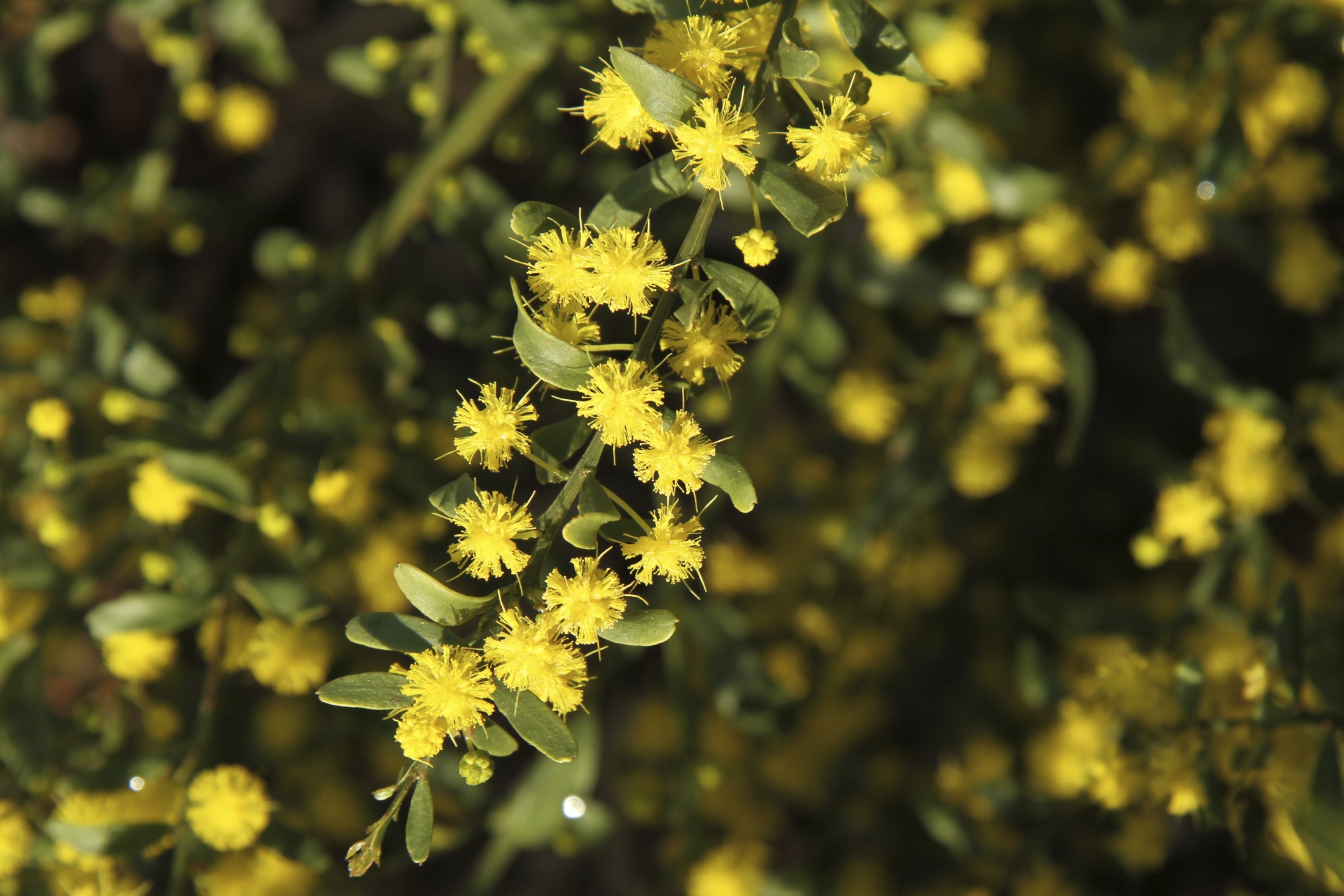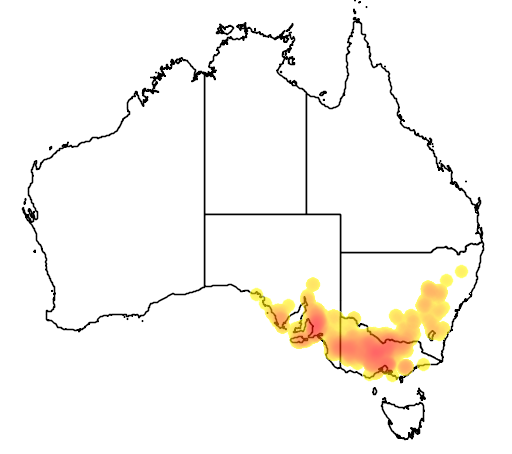Description
Common names
Gold-dust Wattle, Gold-dust Acacia, Round-leaved Wattle.
Scientific names
Acacia acinacea, Acacia rotundifolia.
Family
Mimosaceae.
Genus
Acacia.
Name origin
Acinacea, curved, sword-like, possibly referring to coiled legumes or seed-bearing fruit.
Rainfall
350mm.
Growth rate
Fast.
Growth height
0.3-2m.
Presence in Australia
Common west of the Olympic Highway.
This specie has been identified in the following Australian states: NSW, ACT, Vic, SA.
Habitat
Woodland. A range of soils, chiefly sand.
Habit
Small spreading shrub 30cm to 2m high with arching branches, angled or flattened branchlets and hairy "leaves".
Site preference
Well-drained soil in full or partial sun. Frost and drought tolerant. Resents poor drainage.
Characteristics
Fast-growing. Lifespan may be several decades.
Flowering
Golden-yellow, usually Aug-Oct. Profuse.
Seed collection
Early Dec to mid Feb. Monitor closely as seeds released immediately or within 1-2 days of maturity. Often produces little seed.
Propagation
From scarified seed (±113 viable seeds per gram). Pour boiling or very hot water over seeds and soak for several hours before sowing. Also from cuttings.
Regeneration
From seed and suckers after fire, forming dense groundcover. Does not establish as readily as most wattles when direct seeded.
Shade and shelter
Useful low-level cover in windbreaks.
Land protection
Legume - improves soil fertility by "fixing" nitrogen.
Wildlife
Good habitat. Flowers are a nectar and pollen source for many native beetles, moths and butterflies. Insect-eating birds attracted. Seeds eaten by birds including parrots, native pigeons and quails, and invertebrates including ants (collections of seed often riddled with seed-eating insects).
Ornamental
Attractive for hedges, screens, rock gardens, under trees and in large tubs. Prune lightly after flowering to promote bushiness (heavy pruning promotes suckering). Self-seeds in garden.


